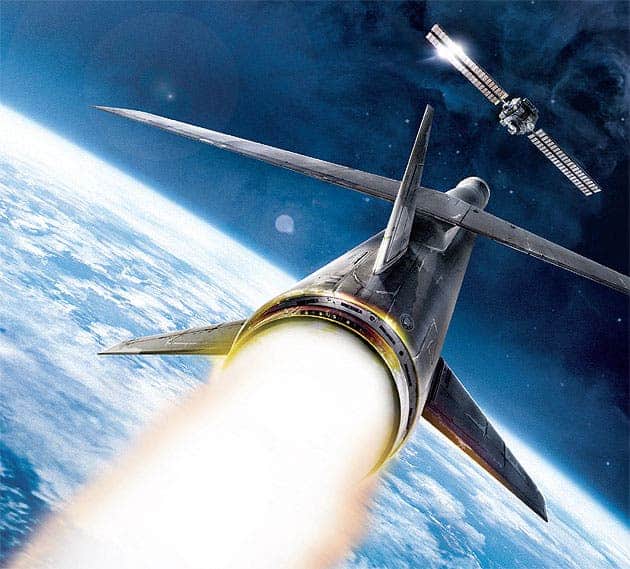Both civilian and military applications have become heavily reliant on digital communications, which in turn are dependent on space hardware like satellites. If only two decades ago, only the biggest companies or wealthy governments could afford to launch permanent or semi-permanent satellites. Today, satellites are smaller, better and cheaper than they ever were, which is why there are more than 1,100 active satellites orbiting the planet. However, they’re as vulnerable as ever, too.
The space race never went away

The first big wake up call came in 2007 when China unceremoniously blew up one of its defunct satellites with a ballistic rocket. This event littered the orbit with thousands of space debris which travel at 17,500 mph, jeopardizing the integrity of other satellites and the safety of humans aboard the international space station. Then, in May 2013, China launched a mysterious missile from its southwest region which Chinese officials said was a scientific experiment. In reality, it seemed like an anti-satellite test as it reached a far more distant orbit than you’d expect, as high as 22,000 miles away right where the Pentagon prefers to park its national security satellites.
“If satellites are knocked out, even temporarily, it could have serious consequences on the military’s ability to operate effectively,” said Bill Ostrove, a space systems analyst at Forecast International.
“There are a few different ways that a satellite could be disabled that the United States is afraid of. The most obvious way is to launch a missile into space that targets a satellite,” Ostrove said. “The United States has a legitimate fear of anti-satellite weapons.”
Since these events were reported, U.S. military officials, like the Director of National Intelligence James R. Clapper, have repeated called out that “foreign adversaries are developing weapons that could degrade or destroy some of the United States’ key satellites that provide essential communication to the military.” These include cyber attacks, but also hardware attacks from jamming, to alright obliteration with a missile. For instance, China has laser weapon capabilities that can dazzle satellites by overloading its sensors, temporarily or permanently damaging them.
These sort of anti-satellite capabilities are also operated by the United States, but the country wants to achieve dominance in space at least as well as it does on Earth.
The United States has the most satellites than any other nation, by far. Without them, both civilian and military operations would be seriously disrupted. To counter the looming threat of space warfare, Air Force Gen. John Hyten told the Washington Post that the Pentagon is heavily investing to protect the “most valuable real estate in space.”
“Every military operation that takes place in the world today is critically dependent on space in one way or another,” said Hyten, commander of the Air Force Space Command. “Whether our own people in the United States are fully cognizant of the dependence on space or not, the rest of the world has been watching us very closely.”
Hyten said agencies are now collaborating and participating in space war games at the Joint Interagency Combined Space Operations Center. A space-war center was established this year where the military is “going to develop the tactics, techniques, procedures, rules of the road that would allow us … to fight the architecture and protect it while it’s under attack,” said Deputy Defense Secretary Robert Work . “There are also plans for a so-called “space fence” which will track space debris, expected to enter operation in 2019.
According to WP, the Pentagon is investing $20 billion in space programs, with an additional $5 billion funneled this year. To get an idea, NASA’s budget for 2015 was less than $19 billion.
There were no details given as to what these counter-measures entail.
This is still new terrain for everyone involved, though. Not too long ago, space was considered a ‘virtual sanctuary’, but as we can plainly see it’s now becoming an operational domain in ways militaries haven’t had to think about in the past. Hopefully, we’ll never see the day of space warfare.






